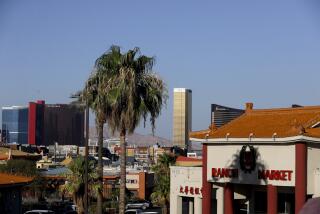Chat & Selfie: Bad fortune cookies, critics from Mars and crab Rangoon
- Share via
Yong Chen, UCI historian and author of “Chop Suey, USA: The Story of Chinese Food in America,” still drives around Orange County comparing demographics and food culture. The California section’s Anh Do caught up with him at the Zen-like Twenty Eight restaurant in Irvine. Over bites of twice-cooked pork belly buns, they dished about food’s influence on life in California. We emailed him questions and crunched the conversation into this:
Why haven’t fortune cookie fortunes kept pace with the quality of Chinese food?
Like most Chinese restaurants, fortune cookie factories are small family operations. To have more captivating fortunes, they need to have a research and writing team.
Virtually every town in America has a Chinese restaurant. How has that changed the nation? California?
Sun Yat-sen, the founder of the Republic of China, noted that every American town and city had at least one Chinese restaurant. For every 15 restaurants in the U.S., one is Chinese.
Chinese food was the first non-Anglo cuisine to enter the realm of mass consumption — it did so a few decades before Italian food. It revolutionized food consumption patterns in the nation and especially in California.
The lure of living in the suburbs made Southern California very attractive to Chinese immigrants. Monterey Park in the 1970s emerged as Little Taipei. Now this type of suburban Chinatown has become an important part of Chinese American life. A newer type of Chinatown — the post-modern Chinatown — has appeared in affluent cities like Irvine.
Do Chinese restaurants produce one thing for African American neighborhoods and another for Latino neighborhoods?
In numerous African American neighborhoods in or around cities like St. Louis and Detroit, many Chinese restaurants continue to have chop suey dishes, which are difficult to find in Mexican communities. It is not a new marketing strategy to cater to African American consumers. It is a historical legacy going back to the heyday of chop suey houses.
Is “A Christmas Story” a racist abomination?
I would not use the “r” word. But I do strongly dislike the Chinese restaurant scene. It reminds us of terrible stereotypes that depicted the Chinese as being utterly un-American and barbaric.
San Francisco versus L.A.?
Ask the snobs at the Michelin Guide, which has stopped covering the Southland. I love San Francisco and have written a book about its Chinese community. But when it comes to food, not only is Southern California the mecca of Chinese food in the U.S., but the gastronomical diversity is almost unrivaled.
Why did egg foo yong disappear from so many California menus?
Because new dishes representing regional cuisines other than Cantonese arrived in the U.S. along with new waves of immigrants.
What’s the most bogus Chinese dish?
You would not find many people who would call crab Rangoon a typical Chinese dish.
Shen Hongfei versus Michael Bauer?
How do you compare birds’ nests with apple pies? These two foodies are very different. Shen Hongfei has a wider perspective, with historical and geographical sensibilities. Michael Bauer is a true pragmatic American, whom I turn to for tips about food in the Bay Area.
Before Jonathan Gold revealed his identity, did you suspect he was Chinese?
I thought he was from Mars or some other planet inhabited by food-loving aliens — few humans could have the deep and extensive knowledge that he has about such diverse cuisines.
Twitter: @newsterrier
More to Read
Sign up for Essential California
The most important California stories and recommendations in your inbox every morning.
You may occasionally receive promotional content from the Los Angeles Times.









